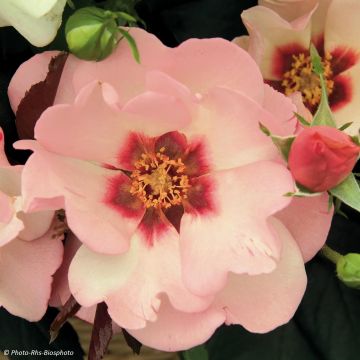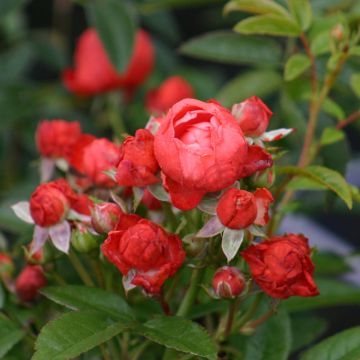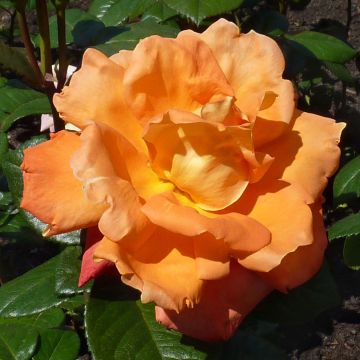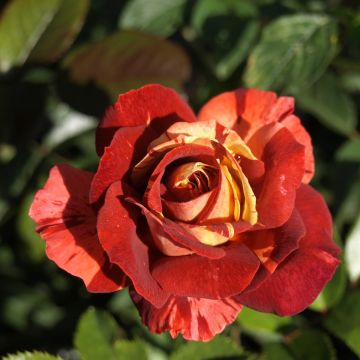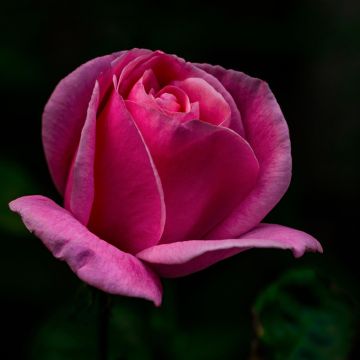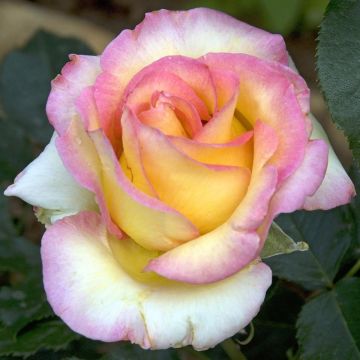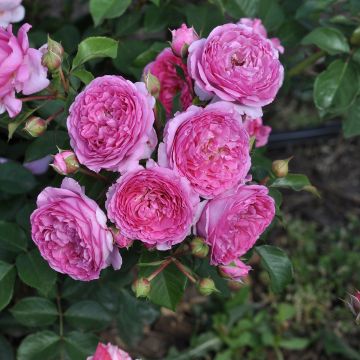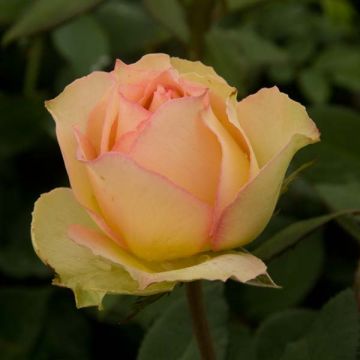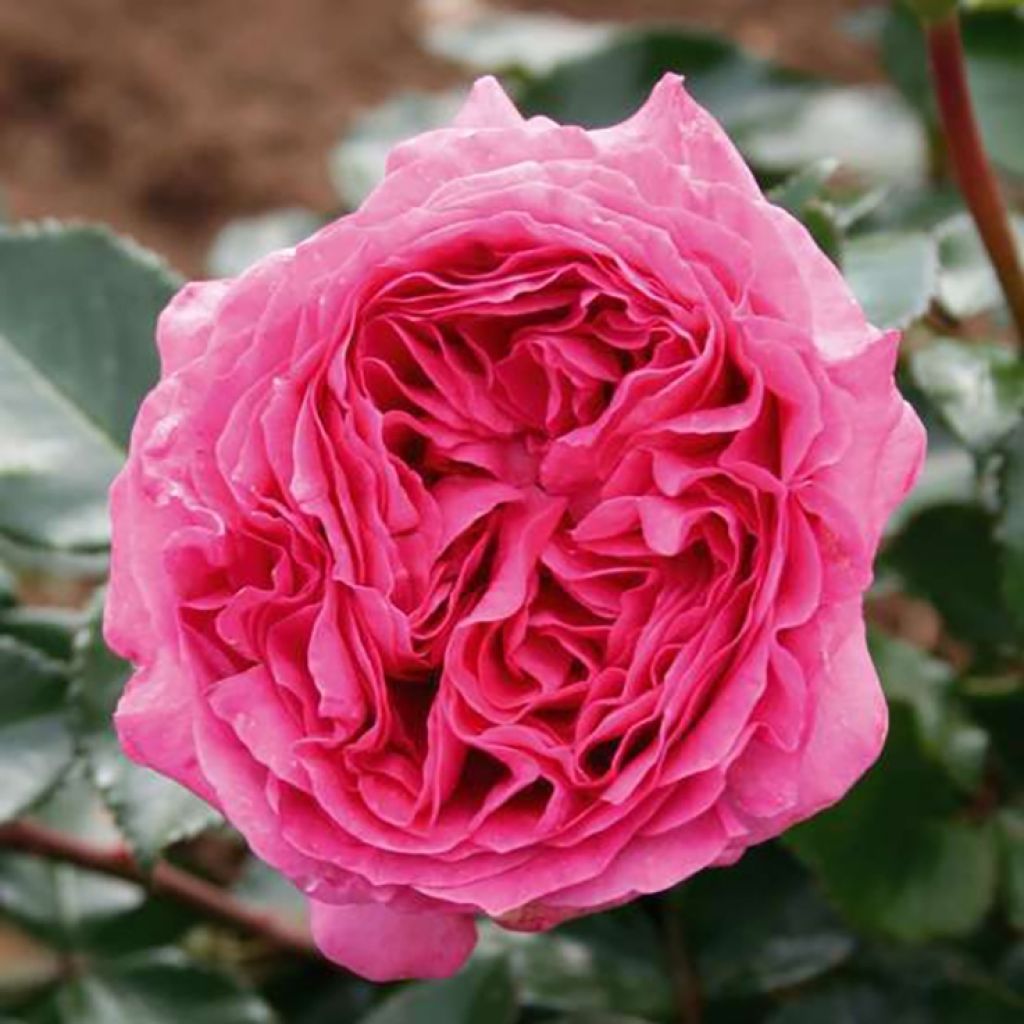

Rosa Bernadette Lafont - Hybrid Tea Rose
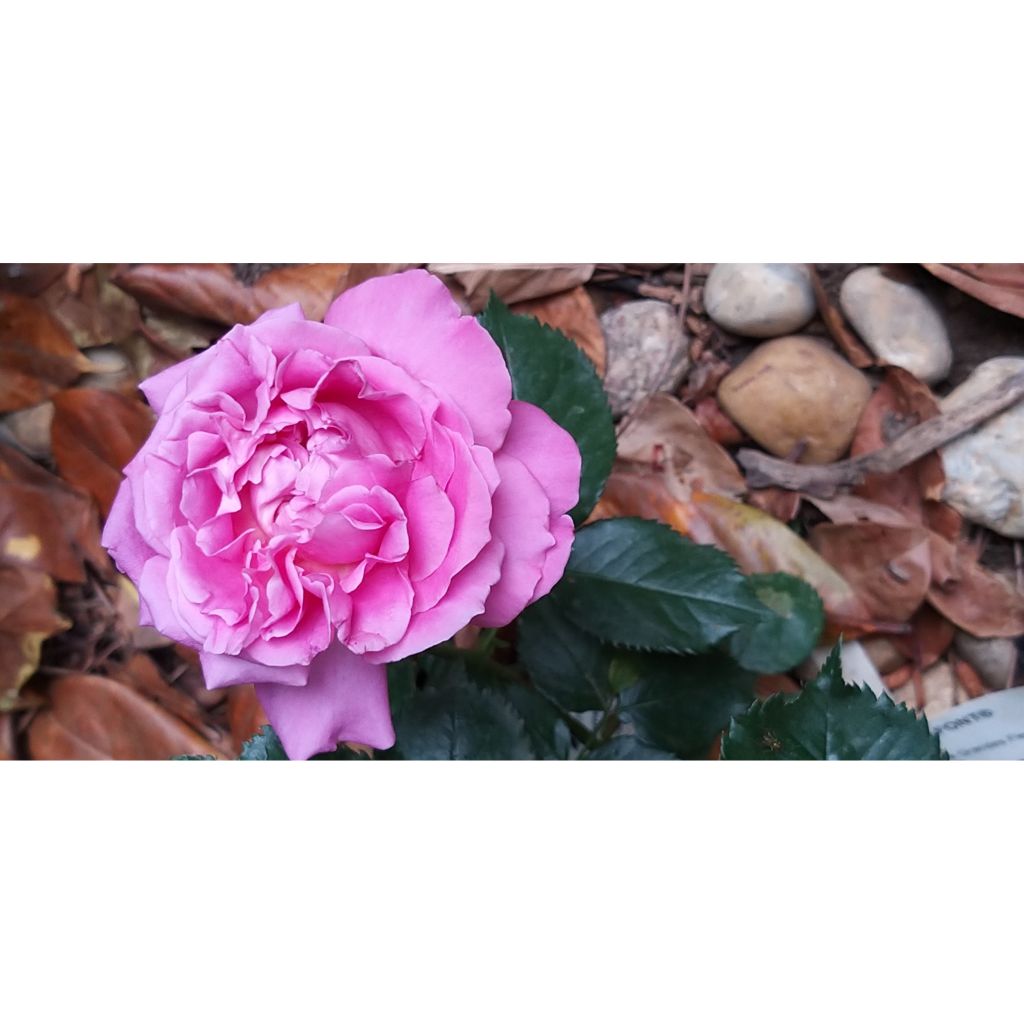

Rosa Bernadette Lafont - Hybrid Tea Rose
Rosa Bernadette Lafont - Hybrid Tea Rose
Rosa Bernadette Lafont® 'Sauvachild'
This item cannot be shipped to the selected country
Delivery charge from €5.90
Delivery charge from €5.90
Delivery to Corse prohibited
More information
Schedule delivery date,
and select date in basket
This plant carries a 24 months recovery warranty
More information
We guarantee the quality of our plants for a full growing cycle, and will replace at our expense any plant that fails to recover under normal climatic and planting conditions.
From €5.90 for pickup delivery and €6.90 for home delivery
Express home delivery from €8.90.
From €5.90 for pickup delivery and €6.90 for home delivery
Express home delivery from €8.90.
Delivery to Corse prohibited: UE law prohibits the import of this plant from mainland France to Corse as part of the fight against Xylella fastidiosa. Please accept our sincere apologies.
More information
Does this plant fit my garden?
Set up your Plantfit profile →
Description
The Bush Rose 'Bernadette Lafont' (Sauvachild), as feminine and sparkling as the eponymous actress, is a hybrid tea variety with a perpetual flowering that combines the charm of old roses with the disease resistance of modern roses. On a modest stature bush, large double flowers of a lively and fresh pink succeed each other, imprisoning an intense fruity fragrance in their multiple petals. It will be perfect in a small romantic bed, and its roses allow for charming bouquets.
The 'Bernadette Lafont' Rose, obtained by Sauvageot, won the Perfume Prize at Bagatelle in 2004. It forms a bush that is not very tall but is well ramified and measures about 80 cm (32in) in height and 60 cm (24in) in width at maturity. Its growth is rapid. Its flowers are double, almost spherical, 10 cm (4in) wide, composed of 60 tight petals, opening in quarters like old roses. They exhale an intense rose fragrance with fruity notes and are long-lasting in a vase. The branches, with small prickles, bear very healthy, glossy, dark green foliage. Its disease resistance is excellent. The flowers are solitary, carried by solid, long stems. The foliage, deciduous, falls in autumn.
With its coquettish and deliciously scented flowering, this Bernadette Lafont large-flowered rose deserves an equally graceful setting and a place not far from the house. Some light-flowering perennial plants (Autumn Asters, foxgloves, penstemons), and grasses are ideal for enhancing its beauty and accompanying it late in the season. Combine it with Rozanne geraniums, Pink Penny, Nepeta Walker's Low and blue or white campanulas. It will look good as a solitary plant in a large pot on your terrace or balcony. Its flowers make very sumptuous bouquets in the company of peonies and white lilacs.
Report an error about the product description
Plant habit
Flowering
Foliage
Botanical data
Rosa
Bernadette Lafont® 'Sauvachild'
Rosaceae
Cultivar or hybrid
Other Large-flower tea Roses
Planting and care
Planting your rose requires some preparation. Begin by working the soil to a depth of 40 cubic cm and adding a base amendment like blood, fish, and bone to the bottom of the planting hole. Remove the plant from its pot and position it by covering the top of the root ball with 3 cm (1in) of soil. Refill the hole and water generously to eliminate any air pockets. It's essential to water the rose regularly for a few weeks during dry weather to help the roots grow. Use a special rose fertiliser that stimulates plant flowering. Choose a sunny location or partial shade to plant your rose in hot regions.
Roses may develop unsightly spots at the end of summer, but this is a natural occurrence and doesn't harm the rose's growth.
Planting period
Intended location
Care
-
, onOrder confirmed
Reply from on Promesse de fleurs
Haven't found what you were looking for?
Hardiness is the lowest winter temperature a plant can endure without suffering serious damage or even dying. However, hardiness is affected by location (a sheltered area, such as a patio), protection (winter cover) and soil type (hardiness is improved by well-drained soil).

Photo Sharing Terms & Conditions
In order to encourage gardeners to interact and share their experiences, Promesse de fleurs offers various media enabling content to be uploaded onto its Site - in particular via the ‘Photo sharing’ module.
The User agrees to refrain from:
- Posting any content that is illegal, prejudicial, insulting, racist, inciteful to hatred, revisionist, contrary to public decency, that infringes on privacy or on the privacy rights of third parties, in particular the publicity rights of persons and goods, intellectual property rights, or the right to privacy.
- Submitting content on behalf of a third party;
- Impersonate the identity of a third party and/or publish any personal information about a third party;
In general, the User undertakes to refrain from any unethical behaviour.
All Content (in particular text, comments, files, images, photos, videos, creative works, etc.), which may be subject to property or intellectual property rights, image or other private rights, shall remain the property of the User, subject to the limited rights granted by the terms of the licence granted by Promesse de fleurs as stated below. Users are at liberty to publish or not to publish such Content on the Site, notably via the ‘Photo Sharing’ facility, and accept that this Content shall be made public and freely accessible, notably on the Internet.
Users further acknowledge, undertake to have ,and guarantee that they hold all necessary rights and permissions to publish such material on the Site, in particular with regard to the legislation in force pertaining to any privacy, property, intellectual property, image, or contractual rights, or rights of any other nature. By publishing such Content on the Site, Users acknowledge accepting full liability as publishers of the Content within the meaning of the law, and grant Promesse de fleurs, free of charge, an inclusive, worldwide licence for the said Content for the entire duration of its publication, including all reproduction, representation, up/downloading, displaying, performing, transmission, and storage rights.
Users also grant permission for their name to be linked to the Content and accept that this link may not always be made available.
By engaging in posting material, Users consent to their Content becoming automatically accessible on the Internet, in particular on other sites and/or blogs and/or web pages of the Promesse de fleurs site, including in particular social pages and the Promesse de fleurs catalogue.
Users may secure the removal of entrusted content free of charge by issuing a simple request via our contact form.
The flowering period indicated on our website applies to countries and regions located in USDA zone 8 (France, the United Kingdom, Ireland, the Netherlands, etc.)
It will vary according to where you live:
- In zones 9 to 10 (Italy, Spain, Greece, etc.), flowering will occur about 2 to 4 weeks earlier.
- In zones 6 to 7 (Germany, Poland, Slovenia, and lower mountainous regions), flowering will be delayed by 2 to 3 weeks.
- In zone 5 (Central Europe, Scandinavia), blooming will be delayed by 3 to 5 weeks.
In temperate climates, pruning of spring-flowering shrubs (forsythia, spireas, etc.) should be done just after flowering.
Pruning of summer-flowering shrubs (Indian Lilac, Perovskia, etc.) can be done in winter or spring.
In cold regions as well as with frost-sensitive plants, avoid pruning too early when severe frosts may still occur.
The planting period indicated on our website applies to countries and regions located in USDA zone 8 (France, United Kingdom, Ireland, Netherlands).
It will vary according to where you live:
- In Mediterranean zones (Marseille, Madrid, Milan, etc.), autumn and winter are the best planting periods.
- In continental zones (Strasbourg, Munich, Vienna, etc.), delay planting by 2 to 3 weeks in spring and bring it forward by 2 to 4 weeks in autumn.
- In mountainous regions (the Alps, Pyrenees, Carpathians, etc.), it is best to plant in late spring (May-June) or late summer (August-September).
The harvesting period indicated on our website applies to countries and regions in USDA zone 8 (France, England, Ireland, the Netherlands).
In colder areas (Scandinavia, Poland, Austria...) fruit and vegetable harvests are likely to be delayed by 3-4 weeks.
In warmer areas (Italy, Spain, Greece, etc.), harvesting will probably take place earlier, depending on weather conditions.
The sowing periods indicated on our website apply to countries and regions within USDA Zone 8 (France, UK, Ireland, Netherlands).
In colder areas (Scandinavia, Poland, Austria...), delay any outdoor sowing by 3-4 weeks, or sow under glass.
In warmer climes (Italy, Spain, Greece, etc.), bring outdoor sowing forward by a few weeks.

































